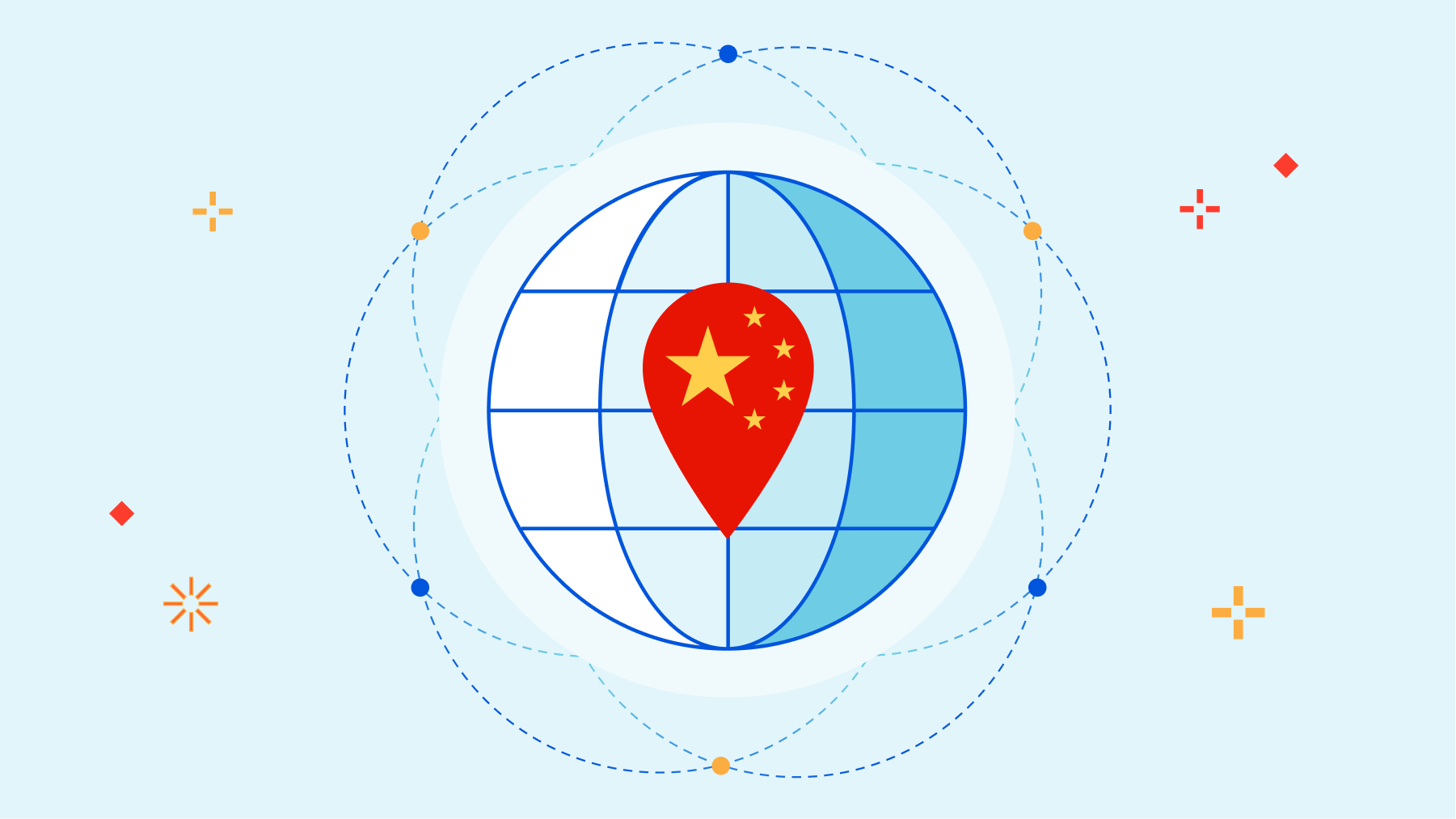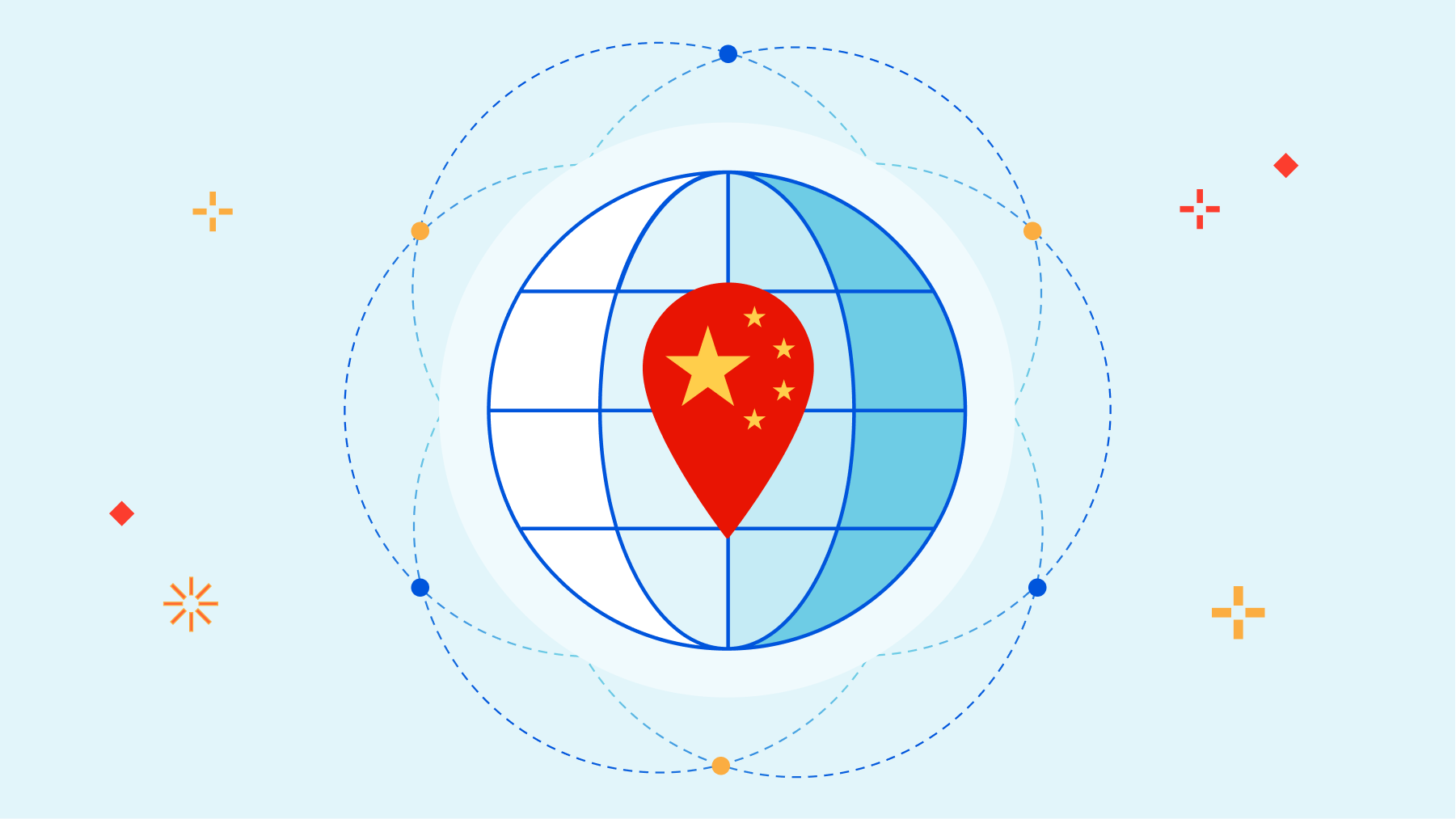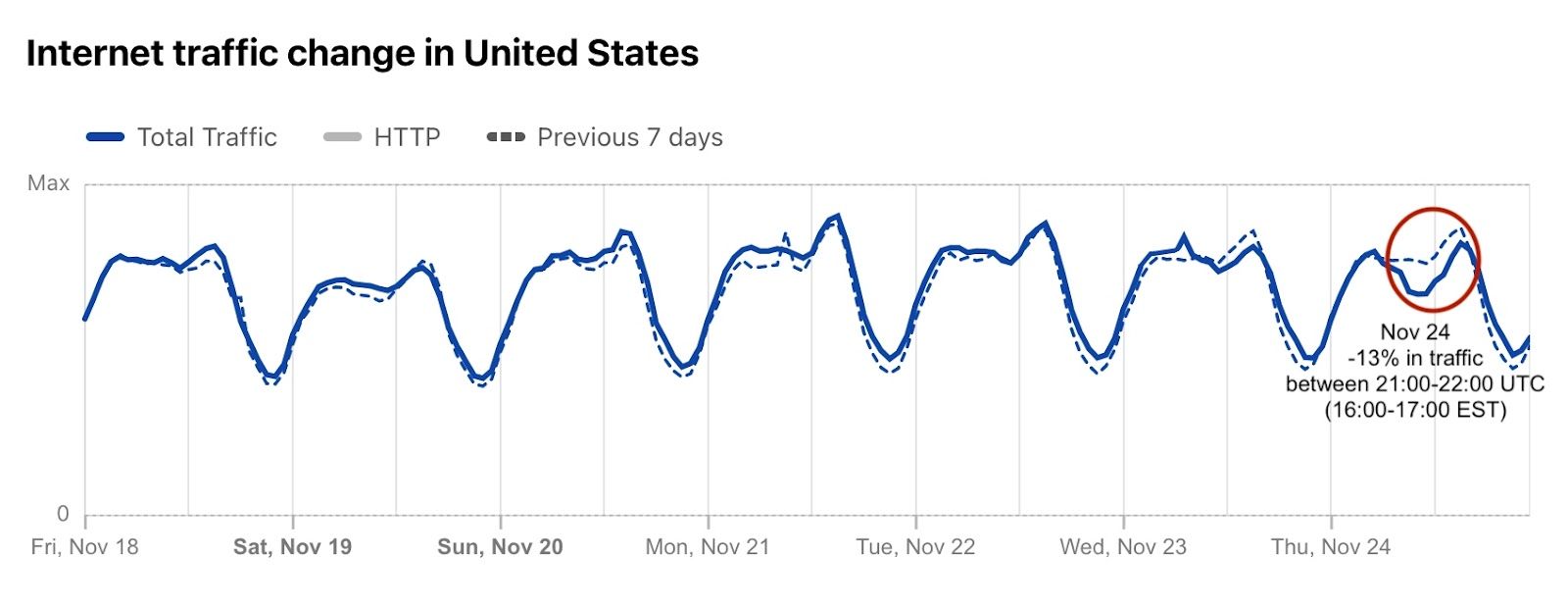Cloudflare expands Project Pangea to connect and protect (even) more community networks


In July 2021, Cloudflare announced Project Pangea to help underserved community networks get access to the Internet for free. Today, as part of Impact Week, we’re excited to expand this program to support even more communities by relaxing the technical requirements to participate.
Previously, in order to be eligible for Project Pangea, participants would need to bring at least a /24 block of IP space for Cloudflare to advertise on their behalf (referred to as “Bring Your Own IP”). But everyone should have secure, fast, and reliable access to the Internet, without being gated by costly network resources like IPv4 space. Starting now, participants no longer need to bring a /24 in order to access Pangea services: Internet connectivity, DDoS protection, network firewalling, traffic acceleration, and more, are available for free for eligible networks.
How is Project Pangea helping community networks?
The Internet Society, or ISOC, describes community networks as “when people come together to build and maintain the necessary infrastructure for Internet connection.” Most often, community networks emerge from need, and in response to the lack or absence of available Internet connectivity.
Cloudflare’s global network, which spans more than 275 cities across the world, provides Continue reading
The US government is working on an “Internet for all” plan. We’re on board.


Recently, the United States Department of Commerce announced that all 50 states and every eligible territory had signed on to the “Internet for All'' initiative. Internet for All is the US government’s $65 billion initiative to close the Digital Divide once and for all through new broadband deployment and digital equity programs. Cloudflare is on a mission to help build a better Internet, and we support initiatives like this because we want more people using the Internet on high-throughput, low-latency, resilient and affordable Internet connections. It’s been written often since the start of the pandemic because it’s true: it isn’t acceptable that students need to go to a Taco Bell parking lot to do their homework, and a good Internet connection is increasingly important for doing adult jobs as well.
The Internet for All initiative is the result of $65 billion in broadband-related funding appropriated by the US Congress as part of the Infrastructure Investment and Jobs Act (IIJA). It’s been called a “once in a generation” funding opportunity, and compared with the Rural Electrification Act which brought power lines to rural America in the 1930s. The components of the broadband portion of the Infrastructure bill are:
- \$42. Continue reading
Project Safekeeping – protecting the world’s most vulnerable infrastructure with Zero Trust

This post is also available in 简体中文, 日本語, 한국어, Deutsch, Français and Español.

Under-resourced organizations that are vital to the basic functioning of our global communities face relentless cyber attacks, threatening basic needs for health, safety and security.
Cloudflare’s mission is to help make a better Internet. Starting December 13, 2022, we will help support these vulnerable infrastructure by providing our enterprise-level Zero Trust cybersecurity solution to them at no cost, with no time limit.
It is our pleasure to introduce our newest Impact initiative: Project Safekeeping.
Small targets, devastating impacts
Critical infrastructure is an obvious target for cyber attack: by its very definition, these are the organizations and systems that are crucial for the functioning of our society and economy. As such, these organizations cannot have prolonged interruptions in service, or risk having sensitive data exposed.
Our conversations over the past few months with government officials in Australia, Germany, Japan, Portugal, and the United Kingdom show that they are focused on the threat to critical infrastructure, but resource constraints mean that their attention is on protecting large organizations – immense financial institutions, hospital networks, oil pipelines, and airports. Yet, the small critical infrastructure organizations that Continue reading
Expanding Area 1 email security to the Athenian Project

This post is also available in 简体中文, Deutsch, Français and Español.

Election security encompasses a wide variety of measures, including the protection of voting machines, election office networks, voter registration databases, and other systems that manage the electoral process. At Cloudflare, we have reported on threats to state and local governments under the Athenian Project, how we prepare political campaigns and state parties under Cloudflare for Campaigns for election season, and our work with organizations that report on election results and voting rights groups under Project Galileo.
Since the 2022 US midterm elections, we have been thinking about how we help state and local governments deflect larger cyber threats that target the election community and have been analyzing the biggest problems they are facing. In October 2022, Jen Easterly, the director of the Cybersecurity and Infrastructure Security Agency, said, “The current election threat environment is more complex than it has ever been.” Amid threats, intimidation toward election workers, and cyber attacks against election infrastructure and operations, preparing for elections is no easy task.
At Cloudflare, our mission is to help build a better Internet. The Internet plays a key role in promoting democracy and ensuring Continue reading
Two months later: Internet use in Iran during the Mahsa Amini Protests


A series of protests began in Iran on September 16, following the death in custody of Mahsa Amini — a 22-year-old who had been arrested for violating Iran’s mandatory hijab law. The protests and civil unrest have continued to this day. But the impact hasn’t just been on the ground in Iran — the impact of the civil unrest can be seen in Internet usage inside the country, as well.
With the proliferation of smartphones and the ubiquity of the Internet that has resulted, it’s no longer simply the offline world impacting the Internet; what happens on the Internet is impacting the offline world, too. For that reason, it’s not surprising that in order to limit the spread of the protests — both news of it happening and the further organization of civil unrest — the Iranian government introduced limits on the Internet. This included banning certain social media and communications tools: most notably including Instagram and WhatsApp, which are estimated to be used by over 50% of the Iranian population.
But despite the threat that the protests pose, and the Internet’s enabling role in them, it has not been cut off altogether. In fact, from the perspective of Cloudflare, Continue reading
The latest on attacks, traffic patterns and cyber protection in Ukraine


On February 24, 2022, when Russia invaded Ukraine, Cloudflare jumped into action to provide services that could help prevent potentially destructive cyber attacks and keep the global Internet flowing. In the nearly 10 months since that day, we’ve posted about our actions, network traffic patterns, cyberattacks and network outages we’ve seen during the conflict.
During Impact Week, we want to provide an update on where things currently stand, the role of security companies like Cloudflare, and some of our takeaways from the conflict so far.
Cyberattacks on Ukrainian infrastructure and Cloudflare’s assistance
Since the time of the invasion, Ukrainian government and civilian infrastructure has come under a barrage of DDoS and other common cyberattacks. Although the public perception has been that cyberattacks have not played a significant role in the conflict, cyberspace has been an active battlefield. Ukrainian websites saw a significant spike in application layer firewall mitigated attacks in March 2022 and another spike in mid-September. Ukrainian sites have also seen a significant increase in the percentage of requests that were mitigated as attack traffic on a daily average, when compared with Q4 2021. Those spikes are shown below, using a seven-day rolling average:

The challenges of sanctioning the Internet


Following Russia’s invasion of Ukraine, governments around the world, including the US, UK, and EU announced sweeping sanctions targeting the Russian and Belarussian economies. These sanctions prohibit a specified level of economic activity in an effort to use economic influences to punish targeted countries. Almost overnight, we saw unprecedented restrictions put in place for multinational companies doing business in Russia or Belarus.
Separately, recent events in Iran led the US government to authorize additional Internet/communications activities, which were being used widely by average Iranians protesting against the government. This was done by expanding some existing licenses, or exceptions, to sanctions the US has imposed on Iran.
While the use of sanctions as a tool for responding to foreign relations crises is nothing new, the wide-ranging multilateral sanctions that have been imposed on Russia and the recent authorizations in Iran are significant and provide fresh examples of how sanctions can affect access to a free and open global Internet.
Balancing interests in sanctions policy
Cloudflare is committed to complying with all applicable sanctions, including US, UK, and EU sanctions, and we have put in place programs to ensure that compliance. At the same time, we recognize the important role we and Continue reading
How Cloudflare helps secure the inboxes of democracy

This post is also available in 简体中文, 日本語, Français, Español.

We at Cloudflare believe that every candidate, no matter their political affiliation, should be able to operate their campaign without having to worry about the risk of cyberattacks. Malicious attackers such as nation-state threat actors, those seeking monetary reward, or those with too much time on their hands often disagree with our mission and aim to wreak havoc on the democratic process.
Protecting Email Inboxes Is Key In Stopping Attacks
In the past years, malicious actors have used email as their primary threat vector when trying to disrupt election campaigns. A quick search online shows how active attackers still are in trying to compromise election official’s email inboxes.1 Over 90% of damages done to any organization are caused by a phishing attack, making protecting email inboxes a key focus. A well crafted phishing email paired, or an errant click could give an attacker the opportunity to see sensitive information, disseminate false information to voters, or steal campaign donations.
For the United States 2022 midterm elections, Cloudflare protected the inboxes of over 100 campaigns, election officials and public organizations supporting elections. These campaigns ranged from new officials Continue reading
Democratizing access to Zero Trust with Project Galileo

This post is also available in Deutsch, Français, Español, 简体中文.

Project Galileo was started in 2014 to protect free expression from cyber attacks. Many of the organizations in the world that champion new ideas are underfunded and lack the resources to properly secure themselves. This means they are exposed to Internet attacks aimed at thwarting and suppressing legitimate free speech.
In the last eight years, we have worked with 50 partners across civil society to onboard more than 2,000 organizations in 111 countries to provide our powerful cyber security products to those who work in sensitive yet critical areas of human rights and democracy building.
New security needs for a new threat environment
As Cloudflare has grown as a company, we have adapted and evolved Project Galileo especially amid global events such as COVID-19, social justice movements after the death of George Floyd, the war in Ukraine, and emerging threats to these groups intended to silence them. Early in the pandemic, as organizations had to quickly implement work-from-home solutions, new risks stemmed from this shift.
In our conversations with partners and participants, we noticed a theme. The digital divide in terms of cyber security products Continue reading
Cloudflare Zero Trust for Project Galileo and the Athenian Project

This post is also available in 日本語, Deutsch, Français, Español.

The organizations served by Projects Galileo and Athenian face the same security challenges as some of the world’s largest companies, but lack the budget to protect themselves. Sophisticated phishing campaigns attempt to compromise user credentials. Bad actors find ways to disrupt connectivity to critical resources. However, the tools to defend against these threats have historically only been available to the largest enterprises.
We’re excited to help fix that. Starting today, we are making the Cloudflare One Zero Trust suite available to teams that qualify for Project Galileo or Athenian at no cost. Cloudflare One includes the same Zero Trust security and connectivity solutions used by over 10,000 customers today to connect their users and safeguard their data.
Same problem, different missions
Athenian Project candidates work to safeguard elections in the United States. Project Galileo applicants launched their causes to support journalists, encourage artistic expression, or protect persecuted groups. They each set out to fix difficult and painful problems. None of the applications to our programs wrote their mission statement to deal with phishing attacks or internal data loss.
However, security problems plague these teams. Instead of being Continue reading
Welcome to Cloudflare’s Impact Week

In the early days of Cloudflare, we made it a policy that every new hire had to interview with either me or my co-founder Michelle. It’s still the case today, though we now have more than 3,000 employees, continue to hire great people as we find them, and, because there are only so many hours in the day, have had to enlist a few more senior executives to help with these final calls.
At first, these calls were about helping screen for new members of our small team. But, as our team grew, the purpose of these calls changed. Today, by the time I do the final call with someone we’ve made the decision to hire them, so it’s rarely about screening. Instead, the primary purpose is to make sure everyone joining has had a positive conversation with a senior member of our team, so if in the future they ever see something going wrong they’ll hopefully feel a bit more comfortable letting one of us know. I think because of that these calls are some of the most important work I do.
But, for me, there’s another purpose. I get to hear first-hand why people chose to apply. That’s Continue reading
Stop attacks before they are known: making the Cloudflare WAF smarter


Cloudflare’s WAF helps site owners keep their application safe from attackers. It does this by analyzing traffic with the Cloudflare Managed Rules: handwritten highly specialized rules that detect and stop malicious payloads. But they have a problem: if a rule is not written for a specific attack, it will not detect it.
Today, we are solving this problem by making our WAF smarter and announcing our WAF attack scoring system in general availability.
Customers on our Enterprise Core and Advanced Security bundles will have gradual access to this new feature. All remaining Enterprise customers will gain access over the coming months.
Our WAF attack scoring system, fully complementary to our Cloudflare Managed Rules, classifies all requests using a model trained on observed true positives across the Cloudflare network, allowing you to detect (and block) evasion, bypass and new attack techniques before they are publicly known.
The problem with signature based WAFs
Attackers trying to infiltrate web applications often use known or recently disclosed payloads. The Cloudflare WAF has been built to handle these attacks very well. The Cloudflare Managed Ruleset and the Cloudflare OWASP Managed Ruleset are in fact continuously updated and aimed at protecting web applications against known Continue reading
New! Security Analytics provides a comprehensive view across all your traffic


An application proxying traffic through Cloudflare benefits from a wide range of easy to use security features including WAF, Bot Management and DDoS mitigation. To understand if traffic has been blocked by Cloudflare we have built a powerful Security Events dashboard that allows you to examine any mitigation events. Application owners often wonder though what happened to the rest of their traffic. Did they block all traffic that was detected as malicious?
Today, along with our announcement of the WAF Attack Score, we are also launching our new Security Analytics.
Security Analytics gives you a security lens across all of your HTTP traffic, not only mitigated requests, allowing you to focus on what matters most: traffic deemed malicious but potentially not mitigated.
Detect then mitigate
Imagine you just onboarded your application to Cloudflare and without any additional effort, each HTTP request is analyzed by the Cloudflare network. Analytics are therefore enriched with attack analysis, bot analysis and any other security signal provided by Cloudflare.
Right away, without any risk of causing false positives, you can view the entirety of your traffic to explore what is happening, when and where.
This allows you to dive straight into analyzing the results Continue reading
Alex Kim: Why I joined Cloudflare

This post is also available in 한국어, 简体中文, 繁體中文 and 日本語.

I am excited to announce that as of November 1, I have joined Cloudflare as Country Manager of South Korea to help build a better Internet and to expand Cloudflare’s growing customer, partner, and local teams in Korea. We just opened a new entity (after making Seoul our 23rd data center, more than 10 years ago) and I am the first official employee of Cloudflare Korea LLC in Seoul, which is truly a great moment and privilege for me.
A little about me
I was born in Korea and was educated in Korea until middle school, then I decided to move to Toronto, Canada to study film making to become a movie director. I finished high school and obtained a university degree in Toronto, during which I had the opportunity to be exposed to various cultures, as well as learn and become well-versed in the English language. I think it was a great time to learn how diverse people in the world are. My dream of becoming a movie director has changed over time for many reasons, but I think it is no coincidence that I Continue reading
Adjusting pricing, introducing annual plans, and accelerating innovation

This post is also available in 繁體中文, 简体中文, 日本語, 한국어, Deutsch, Français, Pусский, Español, Português.

Cloudflare is raising prices for the first time in the last 12 years. Beginning January 15, 2023, new sign ups will be charged \$25 per month for our Pro Plan (up from \$20 per month) and \$250 per month for our Business Plan (up from \$200 per month). Any paying customers who sign up before January 15, 2023, including any currently paying customers who signed up at any point over the last 12 years, will be grandfathered at the old monthly price until May 14, 2023.
We are also introducing an option to pay annually, rather than monthly, that we hope most customers will choose to switch to. Annual plans are available today and discounted from the new monthly rate to \$240 per year for the Pro Plan (the equivalent of \$20 per month, saving \$60 per year) and \$2,400 per year for the Business Plan (the equivalent of \$200 per month, saving \$600 per year). In other words, if you choose to pay annually for Cloudflare you can lock in our old monthly prices.
After not Continue reading
Cloudflare partners to simplify China connectivity for corporate networks


IT teams have historically faced challenges with performance, security, and reliability for employees and network resources in mainland China. Today, along with our strategic partners, we’re excited to announce expansion of our Cloudflare One product suite to tackle these problems, with the goal of creating the best SASE experience for users and organizations in China.
Cloudflare One, our comprehensive SASE platform, allows organizations to connect any source or destination and apply single-pass security policies from one unified control plane. Cloudflare One is built on our global network, which spans 275 cities across the globe and is within 50ms of 95% of the world’s Internet-connected population. Our ability to serve users extremely close to wherever they’re working—whether that’s in a corporate office, their home, or a coffee shop—has been a key reason customers choose our platform since day one.
In 2015, we extended our Application Services portfolio to cities in mainland China; in 2020, we expanded these capabilities to offer better performance and security through our strategic partnership with JD Cloud. Today, we’re unveiling our latest steps in this journey: extending the capabilities of Cloudflare One to users and organizations in mainland China, through additional strategic partnerships. Let’s break down Continue reading
The Linux Kernel Key Retention Service and why you should use it in your next application


We want our digital data to be safe. We want to visit websites, send bank details, type passwords, sign documents online, login into remote computers, encrypt data before storing it in databases and be sure that nobody can tamper with it. Cryptography can provide a high degree of data security, but we need to protect cryptographic keys.
At the same time, we can’t have our key written somewhere securely and just access it occasionally. Quite the opposite, it’s involved in every request where we do crypto-operations. If a site supports TLS, then the private key is used to establish each connection.
Unfortunately cryptographic keys sometimes leak and when it happens, it is a big problem. Many leaks happen because of software bugs and security vulnerabilities. In this post we will learn how the Linux kernel can help protect cryptographic keys from a whole class of potential security vulnerabilities: memory access violations.
Memory access violations
According to the NSA, around 70% of vulnerabilities in both Microsoft's and Google's code were related to memory safety issues. One of the consequences of incorrect memory accesses is leaking security data (including cryptographic keys). Cryptographic keys are just some (mostly random) data stored in Continue reading
An early look at Thanksgiving 2022 Internet trends

"The more you practice the art of thankfulness, the more you have to be thankful for."
— Norman Vincent Peale, American author
The turkey. The sweet potatoes. The stuffing. The pumpkin pie. Yesterday, November 24, 2022, was Thanksgiving Day in the US. A time for families and loved ones to be together and thankful, according to the tradition. Last year, we saw how the US paused shopping (and browsing) for Thanksgiving. So, how was it this year? Not only did we see Internet traffic go down (by 13%) during Thanksgiving dinner, but it was much higher than usual the day before and the day after (the Black Friday effect… so far). There was also a clear, but short, Thanksgiving day effect on e-commerce DNS trends.
We'll have to wait to see what Black Friday looks like.
Let’s start with Internet traffic at the time of Thanksgiving dinner. Although every family is different, a 2018 survey of US consumers showed that for 42% early afternoon (between 13:00 and 15:00 is the preferred time to sit at the table and start to dig in). But 16:00 seems to be the “correct time” — The Atlantic explains why.
That said, Cloudflare Continue reading
Cloudflare servers don’t own IPs anymore – so how do they connect to the Internet?


A lot of Cloudflare's technology is well documented. For example, how we handle traffic between the eyeballs (clients) and our servers has been discussed many times on this blog: “A brief primer on anycast (2011)”, "Load Balancing without Load Balancers (2013)", "Path MTU discovery in practice (2015)", "Cloudflare's edge load balancer (2020)", "How we fixed the BSD socket API (2022)".
However, we have rarely talked about the second part of our networking setup — how our servers fetch the content from the Internet. In this blog we’re going to cover this gap. We'll discuss how we manage Cloudflare IP addresses used to retrieve the data from the Internet, how our egress network design has evolved and how we optimized it for best use of available IP space.
Brace yourself. We have a lot to cover.
Terminology first!

Each Cloudflare server deals with many kinds of networking traffic, but two rough categories stand out:
- Internet sourced traffic - Inbound connections initiated by eyeball to our servers. In the context of this blog post we'll call these "ingress connections".
- Cloudflare sourced traffic - Outgoing connections initiated by our servers to other Continue reading
Why BGP communities are better than AS-path prepends


The Internet, in its purest form, is a loosely connected graph of independent networks (also called Autonomous Systems (AS for short)). These networks use a signaling protocol called BGP (Border Gateway Protocol) to inform their neighbors (also known as peers) about the reachability of IP prefixes (a group of IP addresses) in and through their network. Part of this exchange contains useful metadata about the IP prefix that are used to inform network routing decisions. One example of the metadata is the full AS-path, which consists of the different autonomous systems an IP packet needs to pass through to reach its destination.
As we all want our packets to get to their destination as fast as possible, selecting the shortest AS-path for a given prefix is a good idea. This is where something called prepending comes into play.
Routing on the Internet, a primer
Let's briefly talk about how the Internet works at its most fundamental level, before we dive into some nitty-gritty details.
The Internet is, at its core, a massively interconnected network of thousands of networks. Each network owns two things that are critical:
1. An Autonomous System Number (ASN): a 32-bit integer that uniquely identifies a network. Continue reading